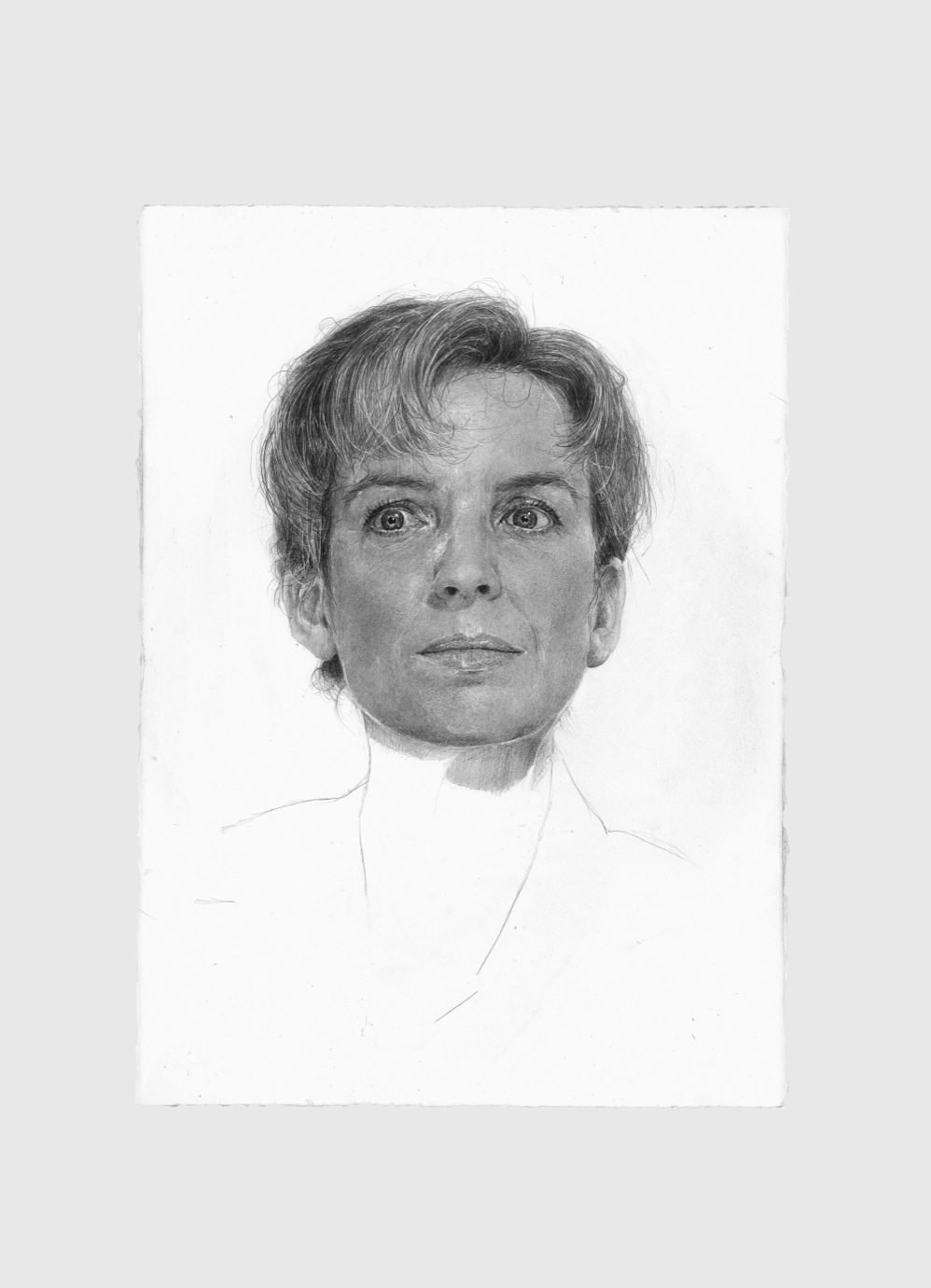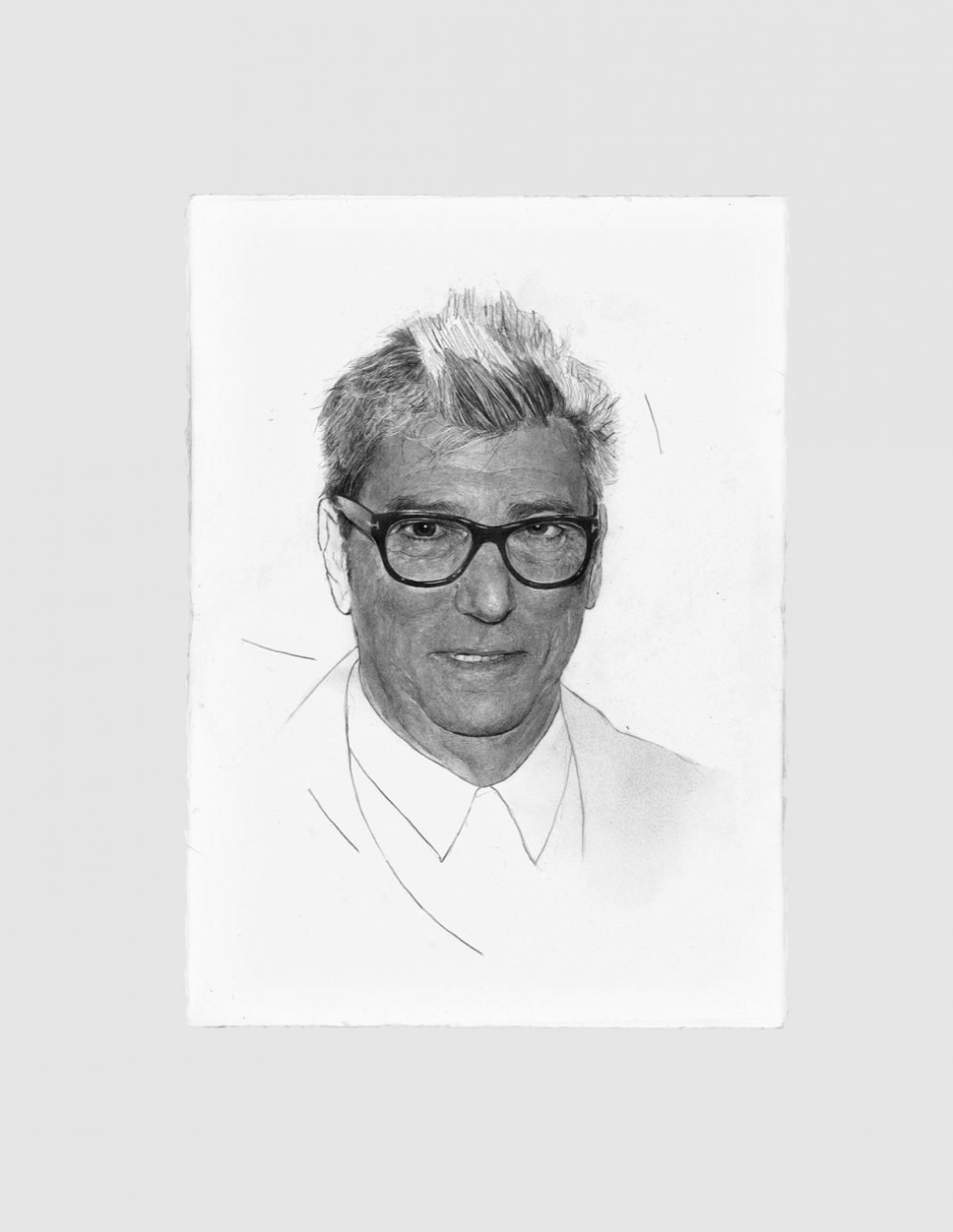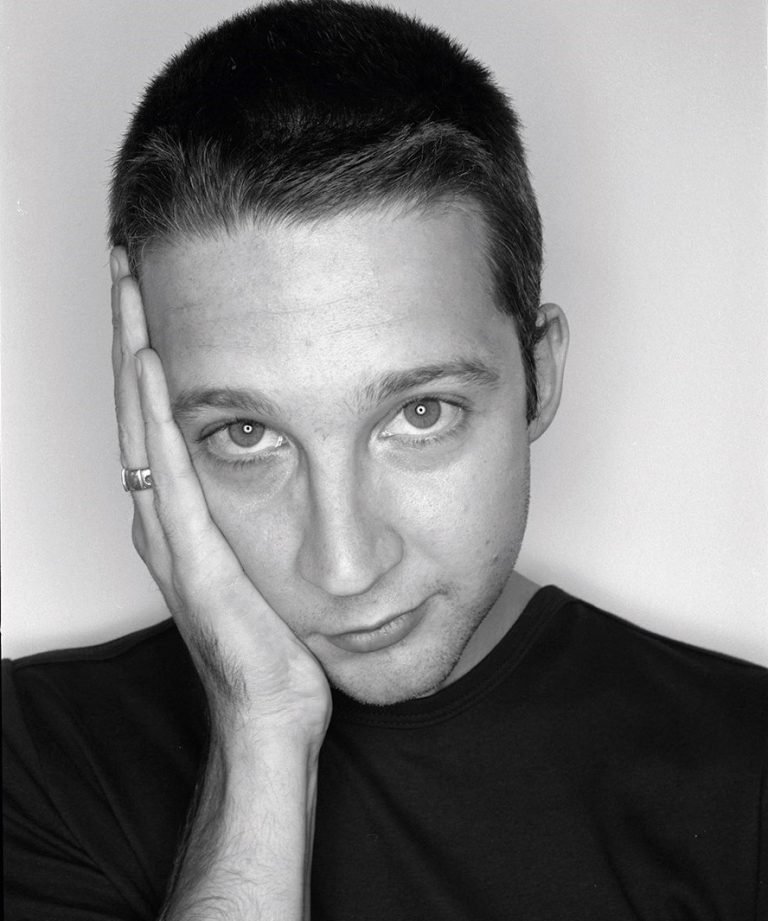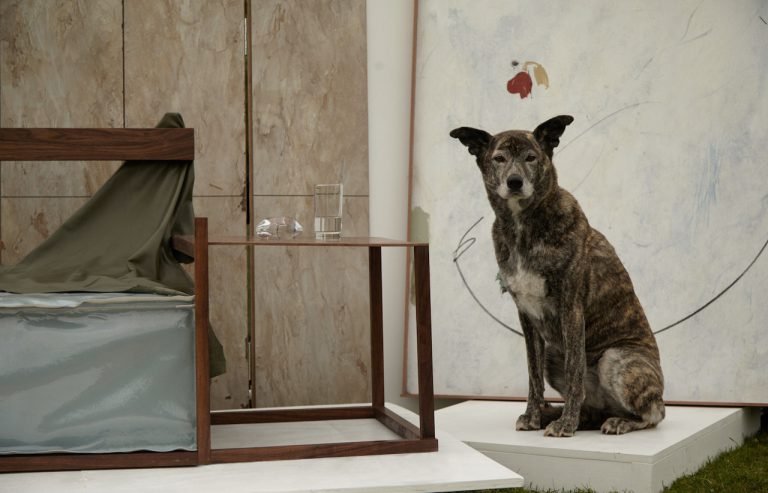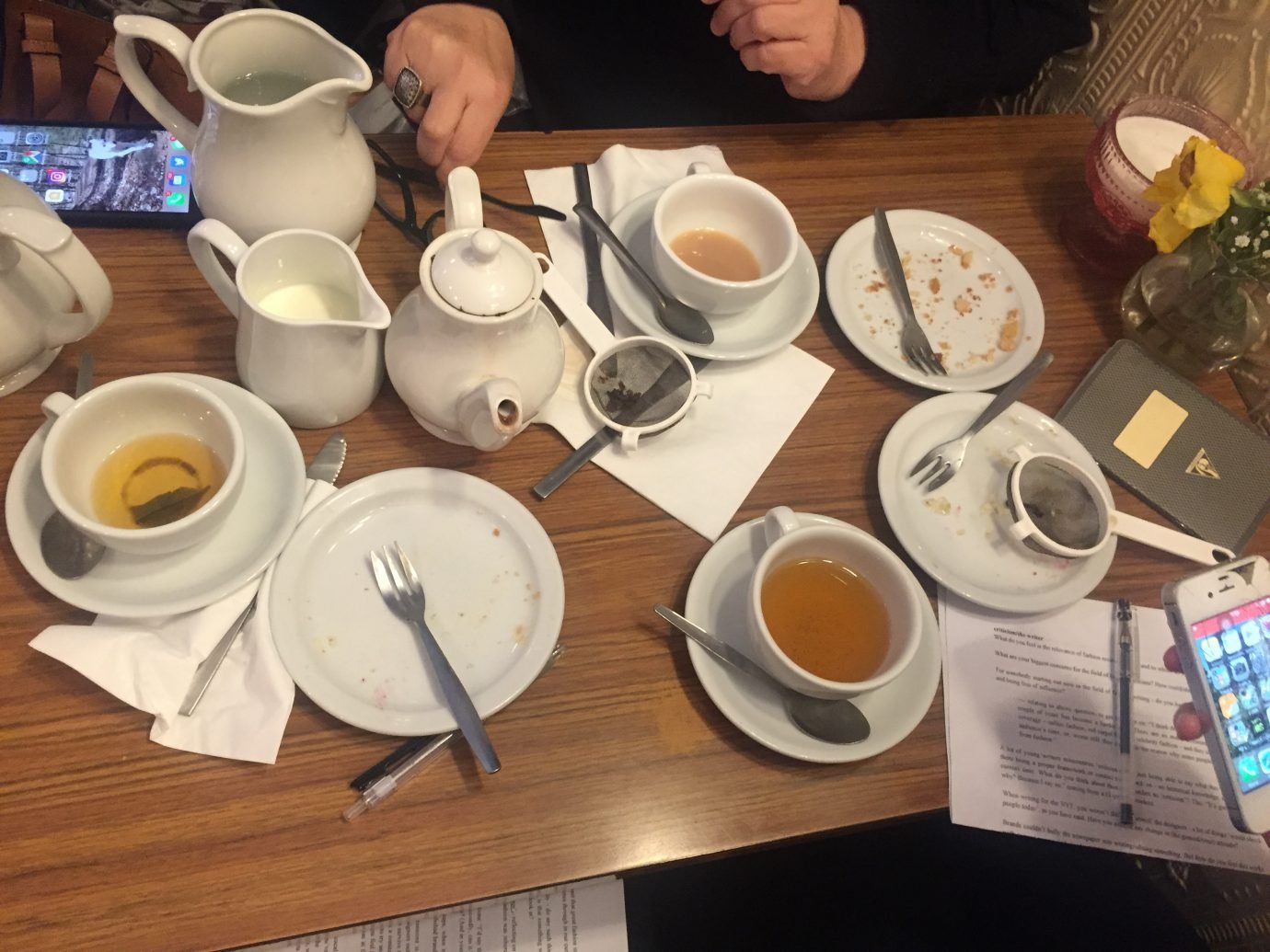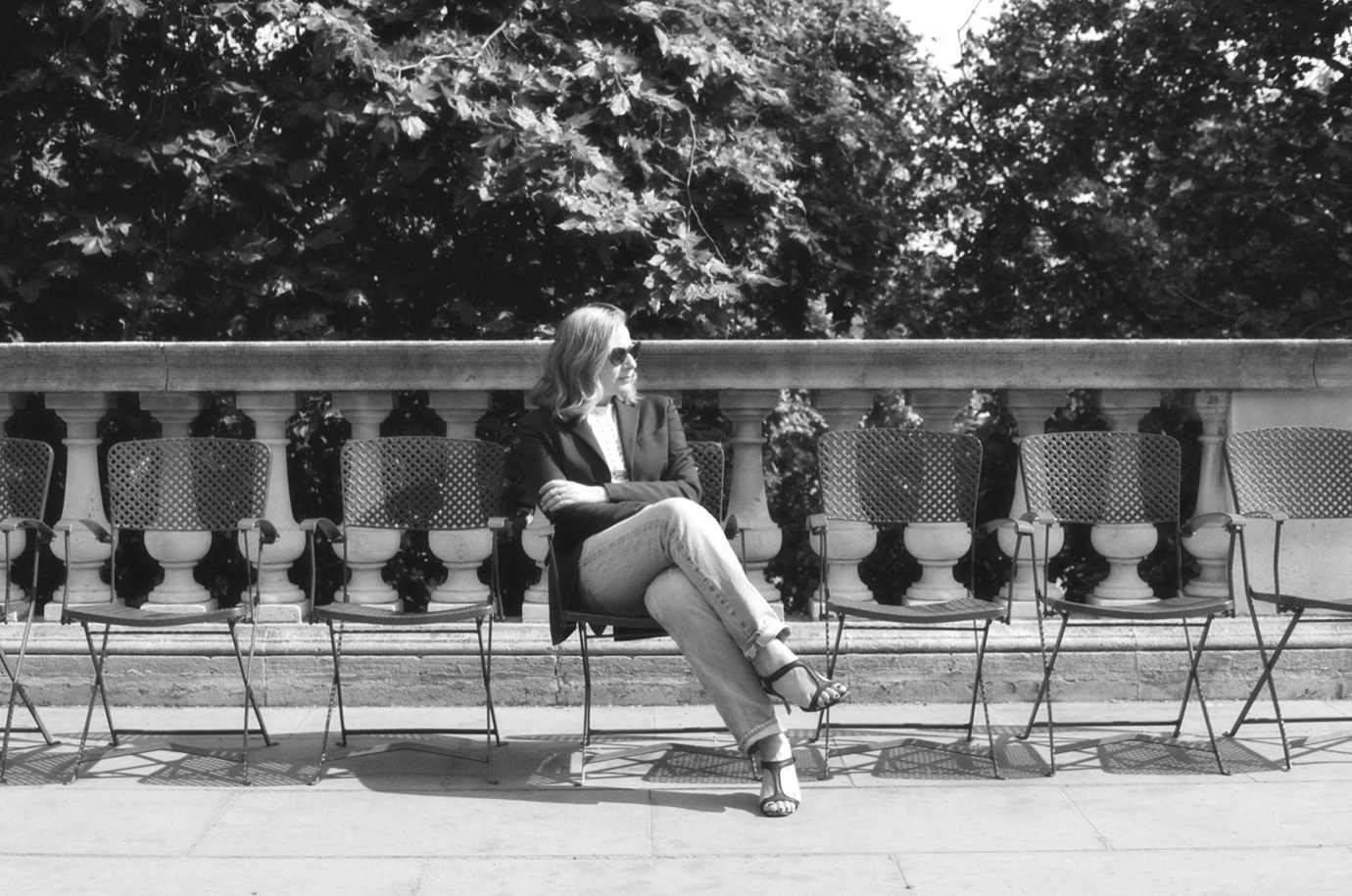A black leather shrink’s chair stands in the corner of Floriane de Saint Pierre’s Paris office. Its presence in the room where marriages are made between fashion houses and visionary creative talent, raises questions about the interviewing strategies of the woman who often ties these knots.
It’s somehow not surprising that our interview takes a slightly psychoanalytical turn when she asks at the very end, “What is your dream?” It’s a question that she never bores of asking, even if she has repeated for over two and a half decades in her role as the fashion industry’s premiere head-hunter.
De Saint Pierre founded her ‘headhunting’ company Floriane de Saint Pierre & Associés in 1990. Although she studied business and graduated with a master’s degree in finance from the prestigious French ESSEC school, her genetically inherited devotion to fashion (she was raised surrounded by golden-age YSL designs) led her to work for Dior in 1984. The fashion house had just been acquired by Bernard Arnault, of LVMH, whose vision to run a consistent, interesting and creative brand undeniably left a mark on de Saint Pierre’s subconscious – she emphasises the word ‘vision’ numerous times throughout our conversation. At Dior, she worked her way up in the company’s finance department ultimately leaving the brand to work for an executive search company for six weeks, after which she decided to start her own firm, with little experience and a lot of entrepreneurial spirit.
“Never compromise on doing it right,” she says when talking about starting one’s own business, and adds: “You need some business experience in your landscape. But even if you do get business people around you, do not expect them to teach you what to do because ‘what to do’ would be on a repeat mode,” and that’s exactly what bores de Saint Pierre: repetition.
Throwing a glance at the shrink’s chair, thinking about business, the words of Vincent Bastien, author of The Luxury Strategy, come to mind: “In luxury, the CEO’s don’t talk,” but within the serene white walls of the Boulevard Malesherbes building, they most certainly do. At length: repeatedly and confidentially, as do the candidates. Imagine the conversations that have taken place here. For those wishing to tell their own dreams to Floriane, perhaps not searching for an analytical explanation but rather a job as the creative leader of a fashion house, we found out the route to getting into that chair, and learnt what lies ahead for the fashion creative in the 21st century.
Can designers approach you or does it only work the other way around?
They can, it is very easy, they reach out to us via phone or email, so they can absolutely send their profile and write to the talent managers.
If you work with recent graduates and someone is just in their first or second year out of school, what should they put their money and time into?
I will ask you a question: what is the common denominator between Miuccia Prada, Jil Sander at the time, Hedi Slimane, and Nicolas Ghesquière?
They have a vision. I think they work less as designers, more as creative directors.
Absolutely, very true.
From what I understand, you’ve got a lot of talented people who make all the small details, like pockets and embroidery, but they can’t understand the whole picture of the brand – anything from stores to the ‘look’, to the packaging, scent, and furniture in the shop.
This is very true. None of them have graduated from school, because for some of the fashion schools did not exist at that time. However, they have a very strong holistic vision. They made it happen through having the right talent. My point of advice would be that the most important thing is to learn impeccability. To know how to design and to know the fit. The product must be absolutely impeccable. However, even a product that is impeccable will have no life if it’s not in the bigger picture – it needs to be of this time.
“The most important thing is to learn impeccability.”
I think it’s super interesting that creative talent, whether it’s in fashion, photography or architecture, should be designing what s/he really feels is right – in a kind of positively narcissistic way. However it should always have empathy with the zeitgeist, otherwise, it is disconnected, it is anachronic and it has no use – then it just becomes narcissistic.
I also think there is always this tension with being ahead of the time and I think creative people are very fortunate because they are ahead of their time. They are really designing and foreseeing societal evolution, namely how people will dress. It is a huge responsibility. I recommend trying to understand your time. What makes your time today? Coco Chanel was so successful because she understood how self- supported women would dress, because she was a self-supported woman. She was an entrepreneur when women were not even allowed to work. Miuccia Prada understood how women could dress beautifully without having in mind to please a man.
How are we going to dress today? Whether you look at the Apple Watch where there is a smart technology, or whether it’s smart textiles – how can you make a step ahead in the best design, the best usability and the best innovation?
The digital spheres have accelerated fashion immensely. Before high street companies wou copy something in a few weeks, now they copy in a matter of days. When somebody can copy designs in this timespan, how should one cope with it?
First of all, if you always have the idea that is ahead, you’re ahead. Secondly, you have to copy something that is external, and it’s very hard to copy all the ingredients: the idea, the textile, the fit.
We have produced so many products at such a fast pace and, at the end of the day, I’m convinced that Uber and Apple will have a major impact on fashion. We see an evolution in the car industry: people don’t want to have a car nowadays. The past generation wanted to have a car, now we live with Uber, and soon we will have cars with no drivers. Now people do not need to own a place, they go to Airbnb. In China, one may rent jewelry. This thrive for flexibility in usage versus ownership is new.
Probably in fashion, we may need a slower pace, with products with more integrity in terms of being with the zeitgeist, being impeccable in terms of the making, and really having a reason to be there.
I’m interested in how you combine business and fashion. Do you think it’s correct for a creative person to be solely creative, or do you think the industry changed so much that one must now look into the business and understand how everything works together?
I think that business is a natural consequence. You can have beautiful products that are not connected with their time, and so the audience will remain limited. You can have beautiful products that are in the zeitgeist, but which are not well-made, so they peak and then go down.
“If you try something in order to be successful you will never succeed.”
If you try something in order to be successful you will never succeed. Yes, creativity comes first, but creativity with impeccability in execution, and impeccability with empathy and usability. I spoke about creative leadership because I always think about this individuality and integrity. Everyone is an individual. Individual in etymology means non–dividere: that you cannot divide. It is a very important respect in every ingredient, from the social, digital, product, musical expression – each of them is holistic. Today, fortunately, integrity is back, because every time something is not done with integrity it becomes very visible.
There is no obligation to do something within the zeitgeist. You can decide to be even more ahead of your time, but then it’s art. For instance Louise Bourgeois, who became really famous quite late, or Isa Genzken. Because they were so well ahead, they had to wait until people understood. In that case, you just have to be very comfortable with the fact that you are not going to do business. Fashion is applied art. It’s something that you and other people should want to wear.
You just mentioned creative leadership. Do you think it’s important for a 21st-century designer to have these leadership skills, and lead other people?
For me, leadership does not necessarily mean leading a team. Leadership is about inspiring. To be a leader is not to be a manager. It’s not about creative management. Being a ‘leader’ means to be the first, to be ahead. You are the first, in a direction that is really connected – or that is soon going to be connected – with your time, to have an audience that really connects with you because there is a resonance.
Do you think this meaning of creative leadership has changed in the last five to ten years?
The depth of it has not changed but the way that you can express creative leadership has changed. Until five or six years ago in our industry, creative leadership was nearly exclusively about a product. Now it is equally about brand awareness, digital being a catalyst in building such awareness. This is just a fact.
This holistic creative leadership approach is absolutely a new dimension because a fashion designer will become inspirational and will have an audience that will relate to this creativity even before being able to have the product in their hands. It will be in front of your eyes before even touching the product. So a designer that’s completely absent from the digital sphere will have really hard times to build this creative leadership.
“Until five or six years ago in our industry, creative leadership was nearly exclusively about product. Now it is equally about brand awareness, digital being a catalyst in building such awareness.”
Is charisma an important character trait for a designer?
I don’t think that it’s about charisma; I think it is about vision. Look at Phoebe Philo, for example. You can hardly see her in the media, the same thing for Hedi Slimane, he doesn’t even give a bow at the end of the show. However, he is an exceptional creative authority. I would probably prefer the words creative authority or creative vision.
Is there anything else you’re looking for in a designer except for vision?
Absolutely: an understanding of this time and possibly tomorrow. Fashion probably has not been enough on the innovation mode – not connected enough with this world. It’s often very much about ‘me, here, what do I like?’ but not about ‘me, in the role of society, my perception and the usability in society.’ It’s about how people dress, and how you make them look beautiful, with usability that is constantly evolving.
“Fashion probably has not been enough on the innovation mode – not connected enough with this world.”
You just mentioned designers who work in an ‘I like this, I dislike that’ manner and their personal ethos is not at all times coherent with that of a brand they work for. I’m curious about how you understand different brands and what they need?
There are some brands I can’t work for: all the brands that I find out of the zeitgeist. There are brands that should just stay in a museum because they were right at some sort of time but are not meaningful today. I can only work for brands that are meaningful today; for which there is still a reason to exist.
The aesthetic expression for those brands can be different. It’s not to think about the codes, it’s really to think about the spirit. What made them successful at the time? Why do they find an audience? If you don’t have an audience, you’re not successful. And if you’re not successful, you can be either art or you’re not on the fashion map today. We try to find the person that will share the same spirit and who can understand the reasons for success really in-depth, and what similar reasons for success would be today. It’s never literal in the sense that a brand has done this in the past, so we should do the same thing.
Do you have your own leadership style?
I think that inclusivity is very important: to listen to people and to be the curator of good ideas of others. My leadership style will be, hopefully, to try and inspire people and push them for impeccability in execution. I think that impeccability is a beautiful word, even in terms of etymology. My leadership style would also be about curiosity – what’s next, what’s next, what’s next? Always being eager to learn, and to push my team to travel, to nurture them, and to try to make things beautiful at every moment. Life is long, but at the same time, we always live with a lot of pressure, with a lot of deadlines and constraints. You have to make little things beautiful. We are altogether successful because of the team. It’s also about small ways of saying thank you. Thank you is the most beautiful thing that I can say to them.
Are you friends with the designers you work with? The moment that they got the job, do they come back for advice and nurturing? You have so much knowledge that I guess you can direct them as well.
It’s very difficult. I always keep an intellectual friendship. We are all running around with very busy lives, but they know that my door is always open and that we can spend together time to think, to brainstorm, to exchange ideas. The days are not long enough for friends, as I have my own company with three offices. Whether they are professional or personal friends, I wish I could spend more time with them. There is just this limitation of numbers of hours. At the same time, my work and my responsibilities always remain very objective. I am always happy to give advice to designers, however, it will never be because of friendship that I will recommend somebody to a brand.
Do you have competitors?
I certainly have colleagues, but I never think about competitors. I think that we are a little bit like doctors: we help brands connect with talent. In that way people choose us, or somebody else, like you would choose a doctor. Doctors are not competitors; you just find that this one will be more in tune with your vision.
I wanted to go back to creative leadership and in particular Christopher Bailey. He was appointed CEO, but it’s quite new from both a business and creative point of view. I think we would only be able to judge in five or ten years from now what the results are about merging these two parts of a company so intrinsically. What are your thoughts on this?
It means that today it’s not important if it’s a businessperson with a creative mindset who is heading a company or a creative talent with a business mindset. What I know is that at the helm of a company you need a creatively thinking mindset. Whether the route to get to this role is from a creative career background or from finance, it’s equal.
If you look at Miuccia Prada, she has been named co-CEO of Prada. Even Giorgio Armani is the chairman of his company – a multi-billion euro brand – and he is involved in every key business decision. I think that there is no either: you just need a creative thinking mindset.
“A designer must decide if they feel interested in becoming the CEO of a company or to focus on their creative leadership and work with a CEO who is executing that job really well.”
Do you think it’s something that future designers should aim for?
A designer must decide if s/he feels interested in becoming the CEO of a company or to focus on his/ her creative leadership and work with a CEO who is executing that job really well. There is no rule. If you feel good at it and you are interested in running a business, then why not?
Do you think the opposite can be possible: a CEO becoming a creative director?
Oh yes, and I am sure that I will find you a great example. Being a creative mind is not about sketching. It is about vision and creative leadership. For example, Jean-Louis Dumas, the former head of Hermès, was very well known as the creative force behind the brand. He was definitely the one who would choose every creative talent, and he also stretched them. When he took Pierre Hardy to design the shoes, it made sense. And when he asked Pierre to become the head of Jewellery Design – a field he did not have experience in – he came up with something that was absolutely beautiful. I don’t see why a CEO who cannot become a creative talent in the sense of doing the design, cannot be the creative leader who picks the right resources.
I think that creativity today is not about designing a product anymore. It’s about inventing meaningful societal paradigms and interacting with talent. Creativity today is being able to have a vision.
Steve Jobs was exactly the kind of CEO who was a creative leader with creative thinking. He was able to understand before anybody else that technology should look beautiful, and he was the first one to understand that he should have an exceptionally talented creative leader in-house, who is Johnny Ive. This is creativity for me. To interact, to push and, when in technology all was square, to say ‘No, I want round angles, I don’t want square angles. You must develop round angles.’ This is a creative vision.
“I think that creativity today is not about designing a product anymore.”
Have you ever made a mistake of choosing the wrong designer?
Yes, of course, it happens. We propose, but we are not the decision-makers. We can say “This would be our first recommendation”. Then, a client may say: “You know what, this person doesn’t speak French or Italian well enough” or “We only want someone who is based in the place where our HQ is, otherwise it won’t work.”
There are so many examples showing that today you can be based in New York and yet work for a company in France. Unfortunately, we are not the decision makers. Unfortunately it happens that lateral constraints lead the client to go for the candidate who can work in a specific country or city, rather than the designer who is the best connected to the spirit of the brand, I cannot find an example of a designer who was super-connected to the spirit of the brand and where it didn’t work. Even if from the outside, that choice could seem risky.
What excites you at the moment?
So many things excite me. Sociologically, the way we think that design is global and the fact that primary access to design is through digital. It’s something that you definitely have to pay a lot of attention to. The fact that talents are all over the planet, and that the majority of customers of Western brands – in terms of demography, by number and by economic power – are non-Westerners is interesting. For us, it’s a new parameter, compared to the generation of designers that have built the fashion of today. There is a huge opportunity, but it’s just something that is new.
Also, technology excites me. A question I am constantly asking myself is: ‘how do you make a product meaningful when the conception and the acquiring of things will be questioned?’ As I said, you’re not owning a car but getting an Uber. So how will this factor of ownership be questioned? Sustainability and ownership have something to do with each other. Also, technology in the sense of what will be the best usability. I’m not talking about fashion that will be on another planet, I’m just talking about how designers should embrace innovation like fashion has always embraced innovation. I’m not talking about products that will be full of technology. It’s not about that, but it’s about how to remain meaningful in a world where this is not a product, but a system.
Now that you browse fashion online, it is image first before even experiencing the product. The same thing probably for product – if you have the perfect watch, what does ‘the perfect watch’ mean? How will I dress? How will the next generation dress? Everybody now wears ‘the sneaker’ – what will be the next shoe people will want to wear? It’s this sociological dimension that fascinates me. Not just design for the sake of design.
Is there anything that bores you?
Repetition. [Laughs] Repetition. Repetition bores me. Repetition! I’m really interested in contemporary art. It always helps me observe fashion and anticipate how it will move on. Contemporary art helps me see what is really innovative, disruptive and ahead.

